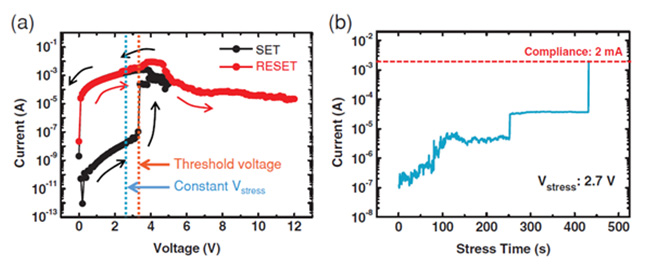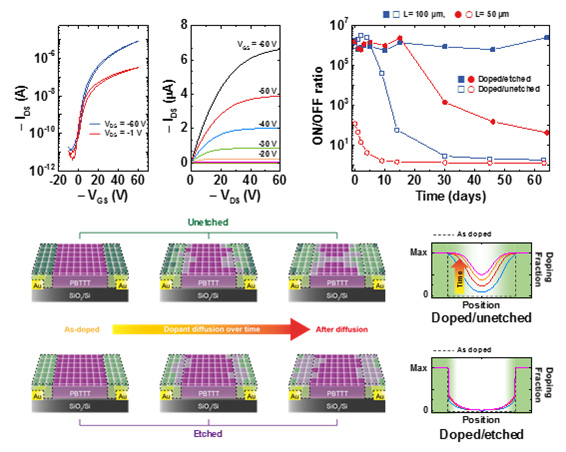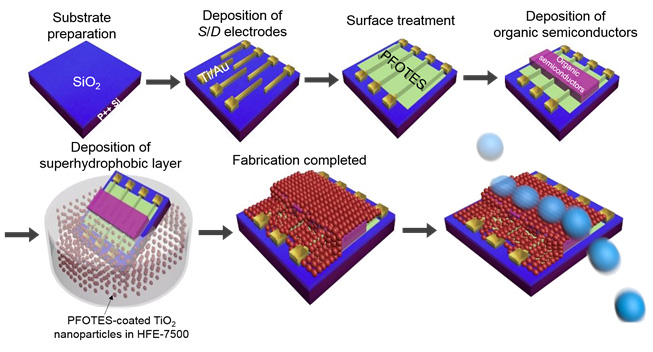Organic Electronics
Organic materials have studied for future generation electronics since they had advantages such as flexibility, low-cost andrelative ease of process. In the past, many types of organic devices like memory, transistor, solar cell and light emitting diode have been demonstrated.
We fabricated organic devices to study underlying physics about conducting path of organic memory, molecular doping effect for organic semiconductors. In addition, our group also studied about enhancing reliabilities of organic device by using superhydrophobic surfaces.
1. Conducting mechanism of organic memory devices
We investigated and analyzed the conducting path mechanisms of organic memory device over time when a constant voltage with various magnitudes was applied. Through this analysis, we found that when and how the memory device is changed from OFF state to ON state, there is a probabilistic conducting path with time, and the probability is highly dependent on the voltage. This study has helped us to better understand the principle of the organic resistive change memory and to calculate the probability of operating errors when the memory is driven.

Ref.Woocheol Lee et al. “Investigation of Time–Dependent Resistive Switching Behaviors of Unipolar Nonvolatile Organic Memory Devices” Advanced Functional Materials 28, 1801162 (2018)
2. Molecular doping effect for organic semiconductors
Organic semiconductor-based devices like organic transistorshould reduce contact resistance for better performances. Because of the Schottky contact at the metal–organic semiconductors interfaces, a non‐ideal transfer curve feature often appears in the low‐drain voltage region. We improved the contact properties of organic transistors by applying a selective contact doping technique based on solid state diffusions. To enhance device stabilities of organic transistors,

we also investigated how the dopants diffused in organic semiconductor.
Ref.Youngrok, Kim et al, “Enhanced Charge Injection Properties of Organic Field‐Effect Transistor by Molecular Implantation Doping”, Advanced Materials 31, 1806697 (2019).
3. Enhancing reliabilities of organic transistors by introducing superhydrophobic layers
One of the long-standing problems in the field of organic electronics is their instability in the open environment. We reported a facile method to deposit an organo-compatible superhydrophobic protection layer on organic semiconductors under ambient conditions. The protected organic devices exhibited more reliable electrical properties even exposed to strong solvents due to its superhydrophobicity.

Ref. Daekyoung Yoo et al, “Highly Reliable Superhydrophobic Protection for Organic Field-Effect Transistors by Fluoroalkylsilane-Coated TiO2 Nanoparticles” ACS nano 12, 11062 (2018).

